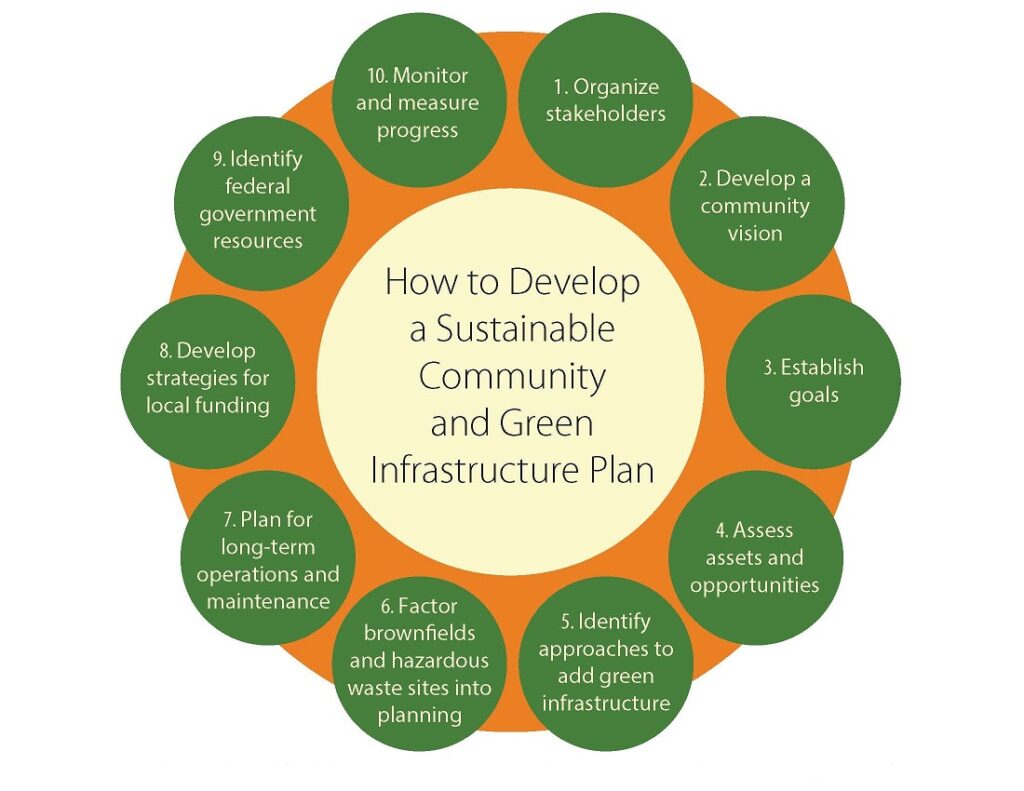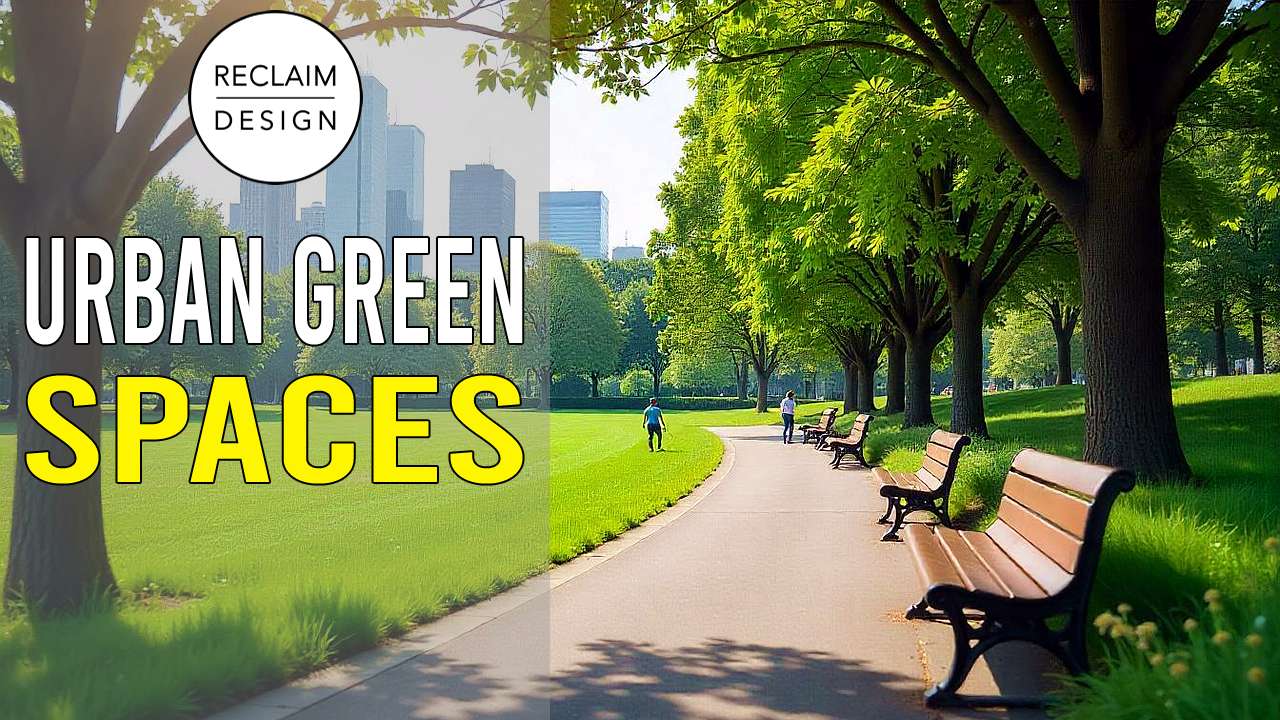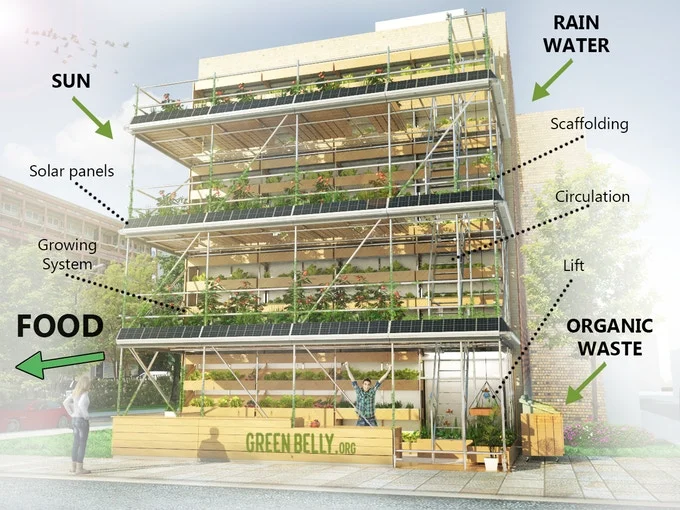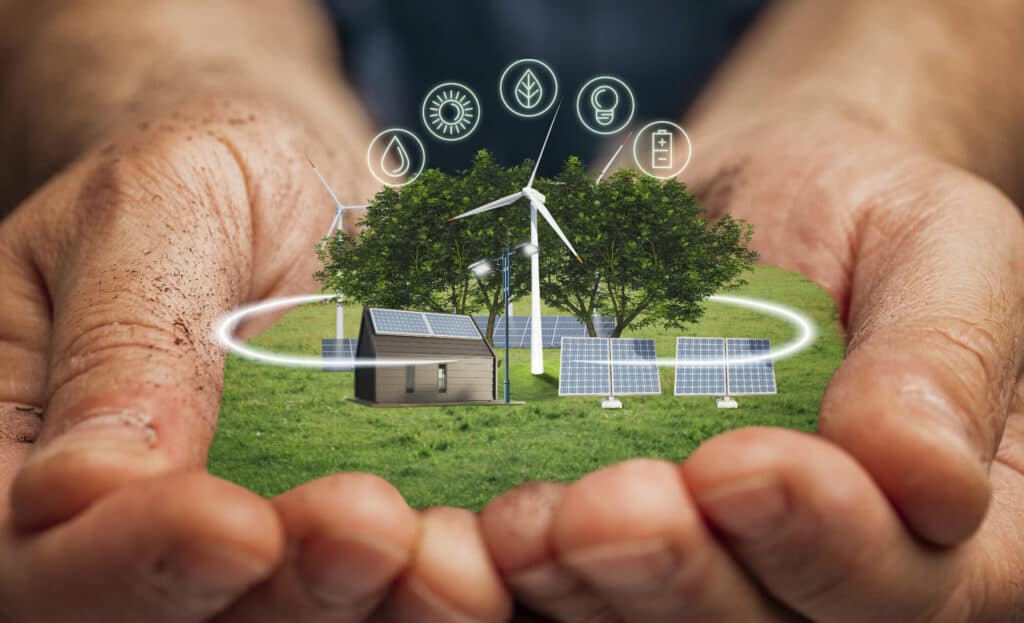
Introduction: The Urgency of Green Infrastructure
In an era defined by climate change, rapid urbanization, and environmental degradation, the concept of sustainable green infrastructure has emerged as a critical pathway towards creating resilient, livable, and ecologically sound communities. Green infrastructure, far from being a mere aesthetic addition, represents a strategically planned network of natural and semi-natural areas designed to deliver a wide range of ecosystem services. These services include stormwater management, temperature regulation, air purification, biodiversity conservation, and enhanced human well-being. This comprehensive approach necessitates robust policies that guide its implementation, ensuring its effectiveness and longevity.
This article delves into the multifaceted world of sustainable green infrastructure policy. We will explore its importance, key components, challenges, and opportunities, providing a comprehensive overview of how governments, organizations, and communities can work together to build a greener, more sustainable future. We’ll examine successful case studies, analyze the latest research, and offer practical recommendations for developing and implementing effective green infrastructure policies.
Understanding Green Infrastructure: A Holistic Approach
Green infrastructure is more than just parks and trees; it’s a comprehensive network of interconnected natural and semi-natural areas that provide a multitude of benefits. Unlike traditional gray infrastructure (e.g., concrete pipes and engineered drainage systems), green infrastructure mimics natural processes to manage stormwater, reduce the urban heat island effect, improve air and water quality, and create habitats for wildlife. This holistic approach requires a shift in mindset, viewing nature not as an obstacle to development, but as an integral part of a thriving urban environment.
Key Components of Green Infrastructure
- Urban Forests: Trees and woodlands that provide shade, absorb pollutants, and reduce stormwater runoff.
- Green Roofs: Vegetated rooftops that reduce building energy consumption, manage stormwater, and create habitats.
- Green Walls: Vertical gardens that improve air quality, reduce noise pollution, and enhance building aesthetics.
- Parks and Open Spaces: Areas for recreation, relaxation, and biodiversity conservation.
- Wetlands and Riparian Buffers: Natural areas that filter water, control flooding, and provide habitat for aquatic species.
- Permeable Pavements: Surfaces that allow water to infiltrate into the ground, reducing runoff and recharging groundwater.
- Bioswales and Rain Gardens: Engineered depressions that capture and filter stormwater runoff.
The Importance of Sustainable Green Infrastructure Policy
Policy plays a crucial role in driving the adoption and implementation of green infrastructure. Without clear and consistent policies, green infrastructure projects may be overlooked, underfunded, or poorly integrated into urban planning. Effective policies provide a framework for prioritizing green infrastructure, allocating resources, setting performance standards, and ensuring accountability. They also create a level playing field for developers, encouraging them to incorporate green infrastructure into their projects.
Moreover, sustainable green infrastructure policy addresses the long-term viability of these systems. It considers factors such as maintenance, monitoring, and adaptive management, ensuring that green infrastructure continues to deliver its intended benefits over time. This requires a holistic approach that integrates environmental, social, and economic considerations.
Benefits of Strong Green Infrastructure Policies
- Environmental Protection: Reducing pollution, conserving water resources, and protecting biodiversity.
- Climate Change Mitigation and Adaptation: Reducing greenhouse gas emissions, managing stormwater, and mitigating the urban heat island effect.
- Economic Development: Creating green jobs, increasing property values, and reducing infrastructure costs.
- Social Equity: Improving access to green spaces, promoting public health, and enhancing community resilience.
Key Elements of Effective Green Infrastructure Policy
Developing effective green infrastructure policy requires a comprehensive and integrated approach. It involves setting clear goals, establishing performance standards, providing incentives, and ensuring accountability. Here are some key elements to consider:
1. Clear Goals and Objectives
Policies should clearly define the goals and objectives of green infrastructure initiatives. What specific environmental, social, and economic benefits are to be achieved? What are the target areas and populations? Clear goals provide a roadmap for implementation and allow for effective monitoring and evaluation.
2. Performance Standards and Guidelines
Establish performance standards and guidelines for green infrastructure projects. These standards should specify the minimum requirements for design, construction, and maintenance. They should also address issues such as stormwater management, water quality, biodiversity conservation, and public access. Guidelines provide practical guidance for developers and practitioners, ensuring consistency and quality.
3. Incentives and Funding Mechanisms
Provide incentives to encourage the adoption of green infrastructure. These incentives may include tax credits, grants, rebates, and density bonuses. Funding mechanisms should be established to support green infrastructure projects, particularly in underserved communities. Public-private partnerships can also be leveraged to finance and implement green infrastructure initiatives.
4. Regulatory Frameworks
Incorporate green infrastructure into regulatory frameworks, such as zoning codes, building codes, and stormwater management regulations. This ensures that green infrastructure is integrated into the development process and that it is considered early on in project planning. Regulatory frameworks should also address issues such as land use, conservation easements, and environmental impact assessments.
5. Public Engagement and Education
Engage the public in the development and implementation of green infrastructure policies. Public input is essential for ensuring that policies are responsive to community needs and priorities. Education and outreach programs can raise awareness about the benefits of green infrastructure and encourage public participation. Community-based initiatives can also play a vital role in promoting green infrastructure.
6. Monitoring and Evaluation
Establish a system for monitoring and evaluating the effectiveness of green infrastructure policies. This involves collecting data on key performance indicators, such as stormwater runoff, water quality, air quality, and biodiversity. Regular evaluations can identify areas for improvement and ensure that policies are achieving their intended goals.
7. Adaptive Management
Green infrastructure policies should be adaptive and flexible, allowing for adjustments based on new information and changing conditions. Adaptive management involves monitoring the impacts of policies, evaluating their effectiveness, and making adjustments as needed. This iterative process ensures that policies remain relevant and effective over time.
Challenges and Opportunities in Implementing Green Infrastructure Policy
Implementing green infrastructure policy is not without its challenges. These challenges include funding constraints, regulatory barriers, lack of awareness, and competing land uses. However, there are also significant opportunities to overcome these challenges and accelerate the adoption of green infrastructure.
Challenges
- Funding Constraints: Green infrastructure projects often require significant upfront investment, which can be a barrier for cash-strapped municipalities and organizations.
- Regulatory Barriers: Existing regulations may not adequately address green infrastructure, creating obstacles for implementation.
- Lack of Awareness: Many developers, policymakers, and community members are not fully aware of the benefits of green infrastructure.
- Competing Land Uses: Green infrastructure may compete with other land uses, such as housing, transportation, and commercial development.
- Maintenance and Management: Green infrastructure requires ongoing maintenance and management to ensure its long-term effectiveness.
Opportunities
- Innovative Financing Mechanisms: Explore innovative financing mechanisms, such as green bonds, revolving loan funds, and pay-for-performance contracts.
- Regulatory Reform: Reform existing regulations to promote green infrastructure and remove barriers to implementation.
- Education and Outreach: Increase awareness about the benefits of green infrastructure through education and outreach programs.
- Integrated Planning: Integrate green infrastructure into comprehensive plans, transportation plans, and stormwater management plans.
- Public-Private Partnerships: Foster public-private partnerships to leverage resources and expertise.
- Community Engagement: Engage communities in the planning and implementation of green infrastructure projects.
Case Studies: Successful Green Infrastructure Policies
Several cities and regions around the world have successfully implemented green infrastructure policies, demonstrating the potential for creating more sustainable and resilient communities. Here are a few examples:
1. Philadelphia, Pennsylvania
Philadelphia has emerged as a leader in green infrastructure, implementing a comprehensive plan called “Green City, Clean Waters.” This plan aims to manage stormwater runoff through green infrastructure, reducing pollution and improving water quality. The city has invested heavily in green roofs, rain gardens, and permeable pavements, creating a network of green infrastructure throughout the city. The plan has resulted in significant reductions in stormwater runoff and improvements in water quality.
2. Portland, Oregon
Portland has a long history of promoting green infrastructure, with policies that encourage the use of green roofs, rain gardens, and other green infrastructure practices. The city has also implemented a stormwater management fee that provides incentives for property owners to reduce runoff. Portland’s green infrastructure initiatives have helped to reduce flooding, improve water quality, and enhance the city’s livability.
3. Copenhagen, Denmark
Copenhagen is known for its commitment to sustainability and green infrastructure. The city has implemented a comprehensive green infrastructure plan that includes green roofs, green walls, and urban forests. Copenhagen’s green infrastructure initiatives have helped to reduce the urban heat island effect, improve air quality, and enhance the city’s biodiversity. The city also prioritizes pedestrian and bicycle infrastructure, creating a more sustainable transportation system.
4. Singapore
Singapore is a global leader in green infrastructure, with a national strategy to transform the city into a “City in a Garden.” The city has invested heavily in green roofs, green walls, and vertical gardens, creating a lush and verdant urban environment. Singapore’s green infrastructure initiatives have helped to reduce the urban heat island effect, improve air quality, and enhance the city’s biodiversity. The city also prioritizes water conservation and stormwater management.
The Role of Technology in Green Infrastructure Policy
Technology is playing an increasingly important role in green infrastructure policy, providing tools for planning, design, monitoring, and management. Geographic Information Systems (GIS) can be used to map and analyze green infrastructure networks, identifying areas for improvement and prioritizing investments. Remote sensing technologies, such as drones and satellites, can be used to monitor the performance of green infrastructure over time. Smart sensors can be used to collect data on soil moisture, temperature, and other environmental parameters, providing valuable information for adaptive management.
Moreover, technology can facilitate public engagement and education. Online platforms and mobile apps can provide information about green infrastructure projects, allowing the public to track progress and provide feedback. Virtual reality and augmented reality technologies can be used to visualize green infrastructure designs, helping to communicate the benefits of green infrastructure to stakeholders.
The Future of Sustainable Green Infrastructure Policy
The future of sustainable green infrastructure policy is bright, with increasing recognition of the importance of green infrastructure for creating resilient, livable, and ecologically sound communities. As climate change intensifies and urbanization continues, the demand for green infrastructure will only grow. To meet this demand, policymakers, practitioners, and researchers must work together to develop innovative policies, technologies, and practices.
One key area of focus will be integrating green infrastructure into comprehensive plans and transportation plans. This requires a shift in mindset, viewing green infrastructure not as an add-on, but as an integral part of the urban fabric. Another key area of focus will be developing innovative financing mechanisms to support green infrastructure projects. This may include green bonds, revolving loan funds, and pay-for-performance contracts.
Furthermore, it is essential to promote education and awareness about the benefits of green infrastructure. This can be achieved through public outreach campaigns, educational programs, and community-based initiatives. By engaging the public and empowering communities, we can create a groundswell of support for green infrastructure.
Finally, it is crucial to continue to monitor and evaluate the effectiveness of green infrastructure policies. This requires collecting data on key performance indicators, such as stormwater runoff, water quality, air quality, and biodiversity. Regular evaluations can identify areas for improvement and ensure that policies are achieving their intended goals. Adaptive management is essential for ensuring that green infrastructure policies remain relevant and effective over time.
Conclusion: Building a Greener, More Sustainable Future
Sustainable green infrastructure policy is essential for creating resilient, livable, and ecologically sound communities. By integrating green infrastructure into urban planning, providing incentives, and engaging the public, we can create a greener, more sustainable future for all. While challenges remain, the opportunities are vast. By embracing innovation, collaboration, and adaptive management, we can unlock the full potential of green infrastructure and build a world where nature and cities thrive together.
The journey towards a greener future requires a collective effort. Governments, organizations, communities, and individuals must all play their part in promoting and implementing sustainable green infrastructure. By working together, we can create a world where our cities are not only places of economic opportunity, but also havens of ecological health and human well-being. Let us embrace the challenge and build a future where green infrastructure is not just a policy, but a way of life.



